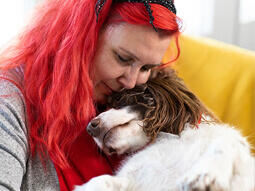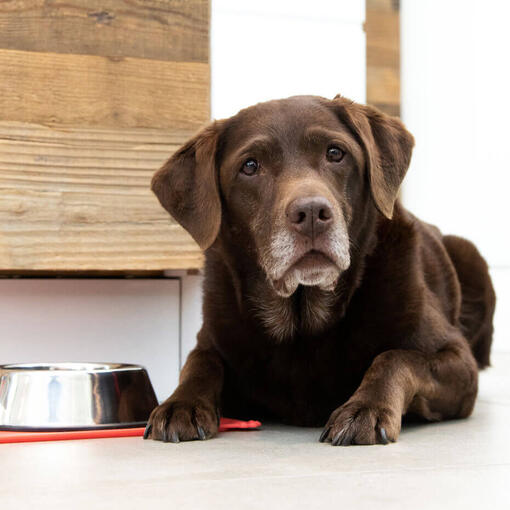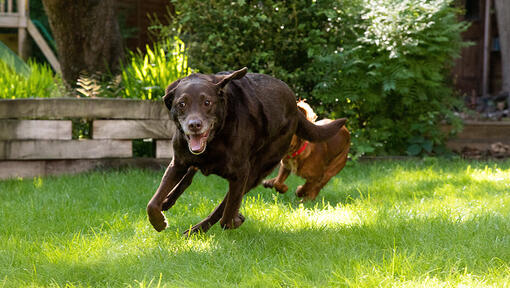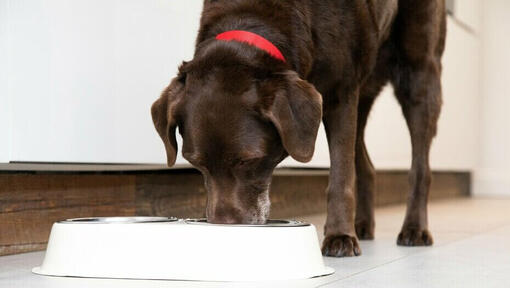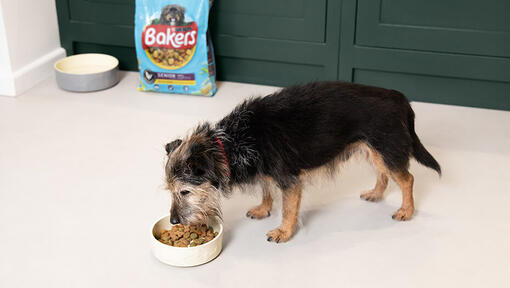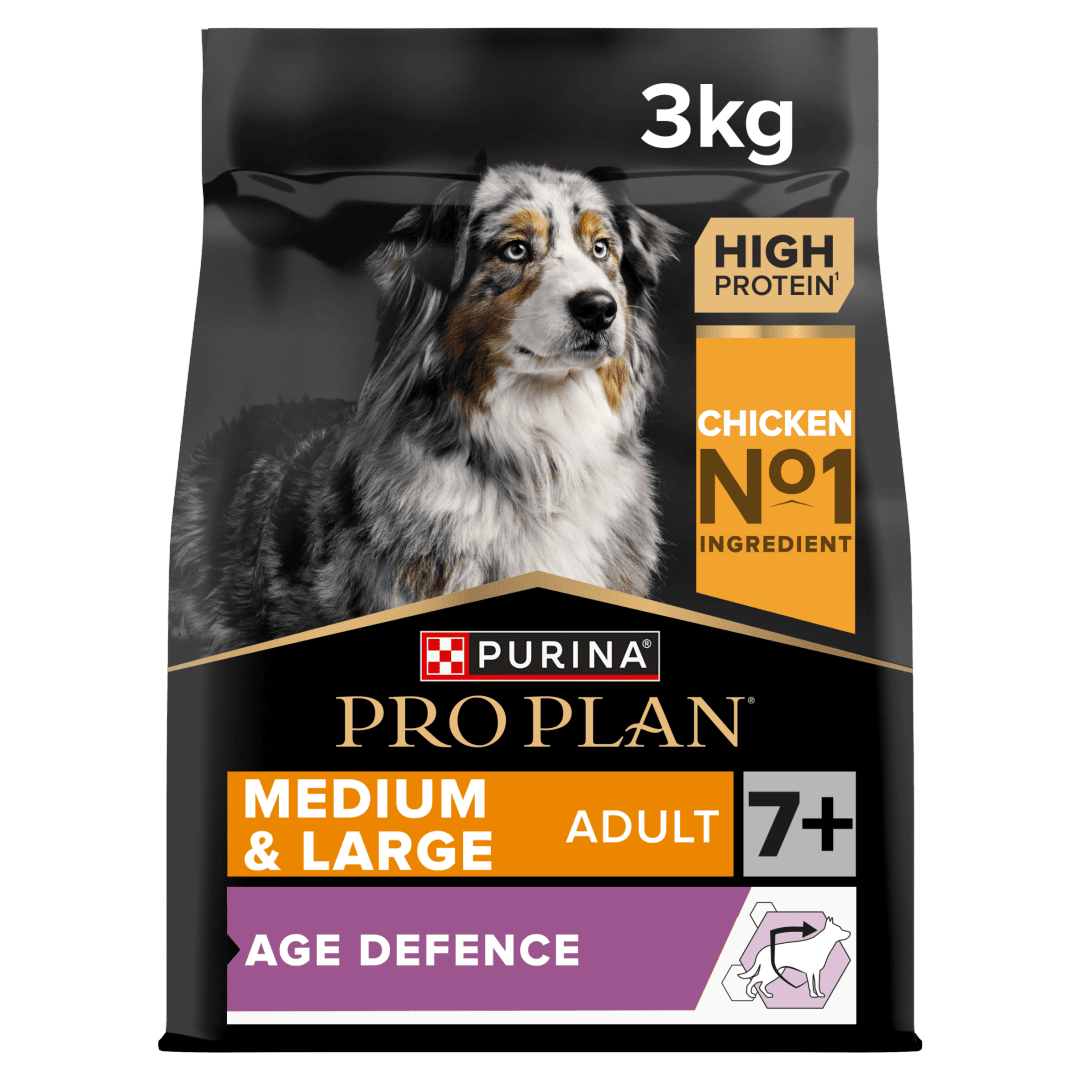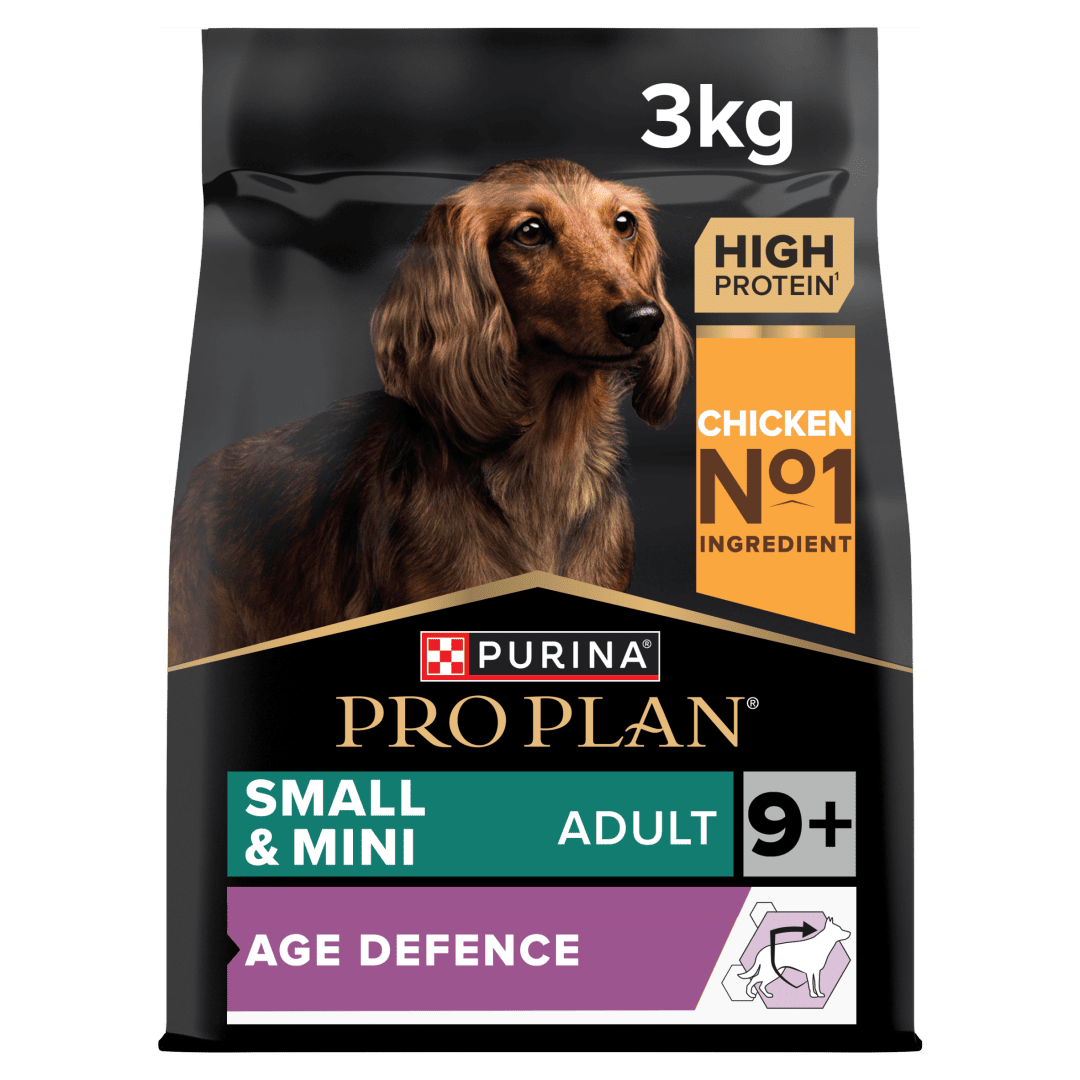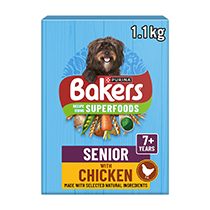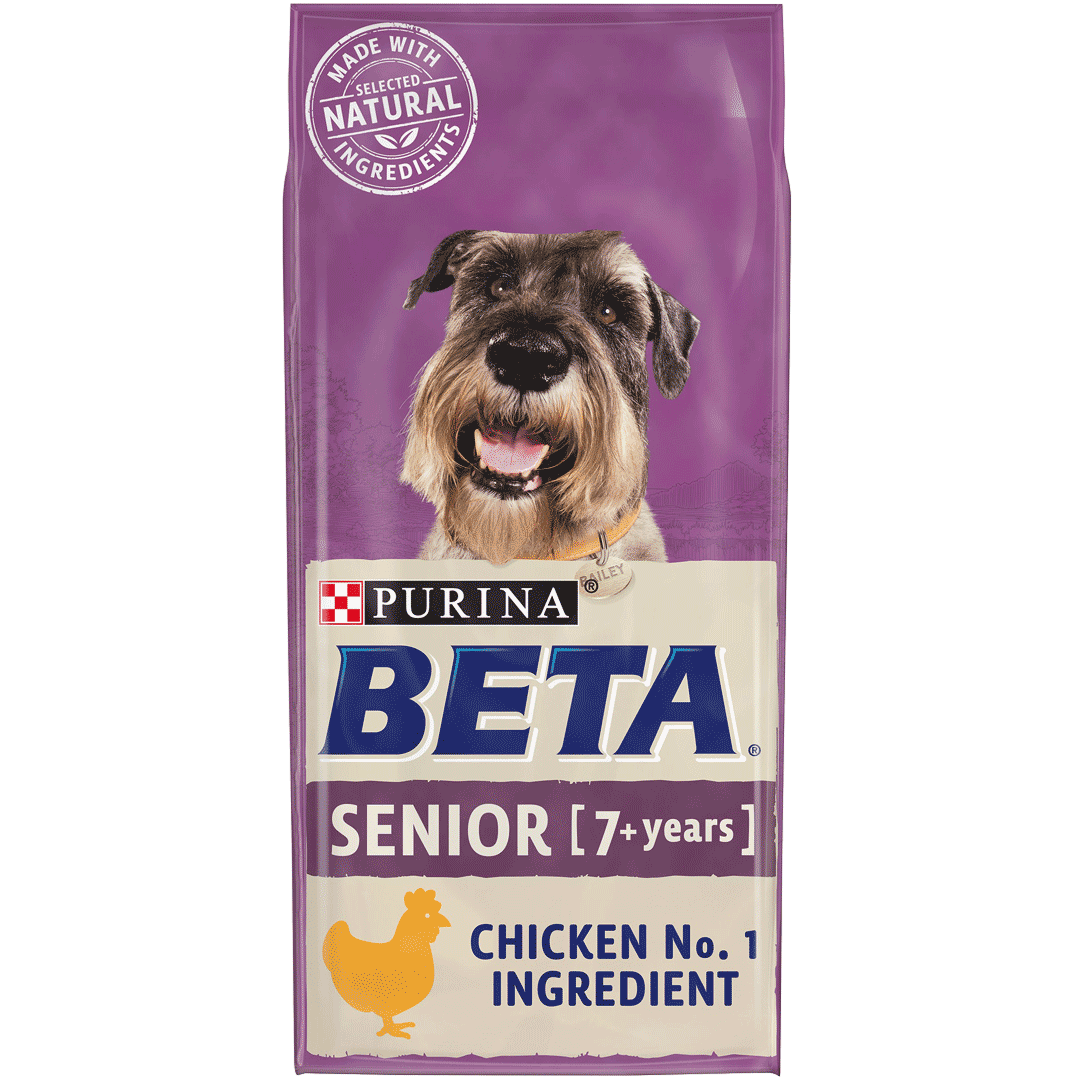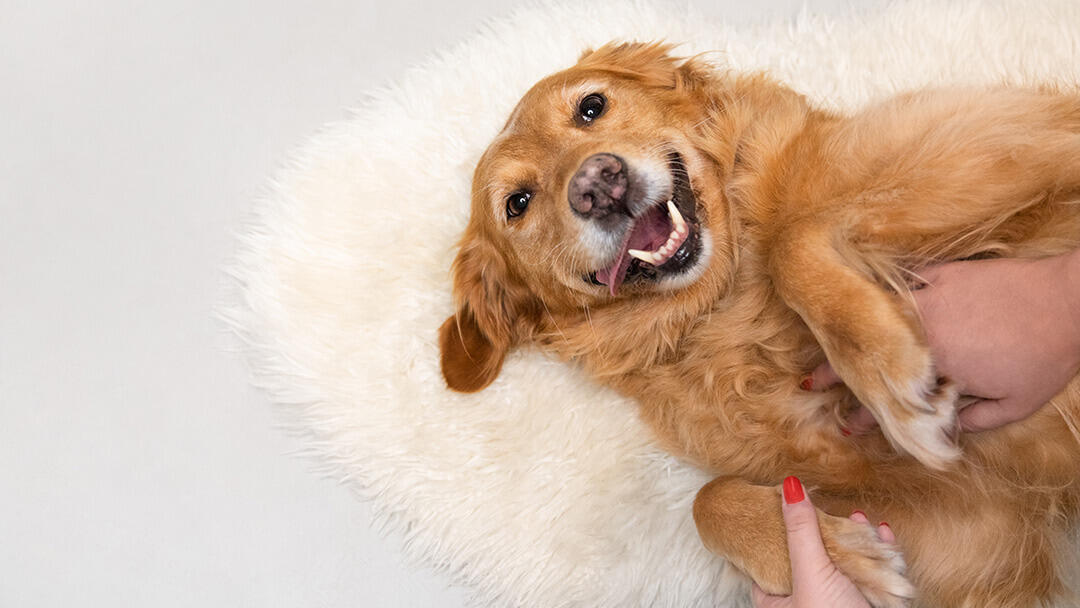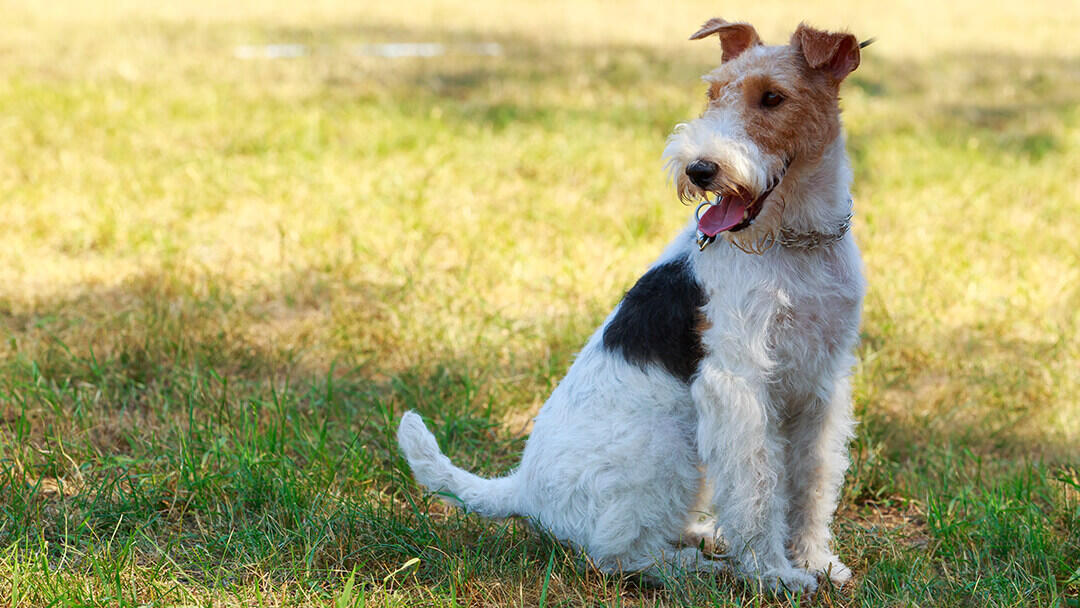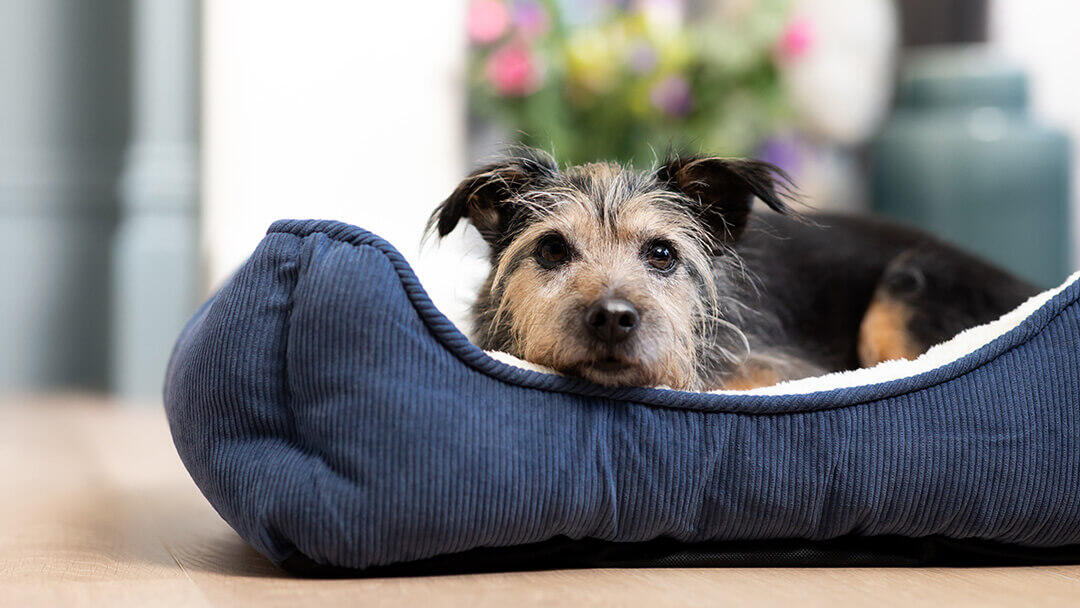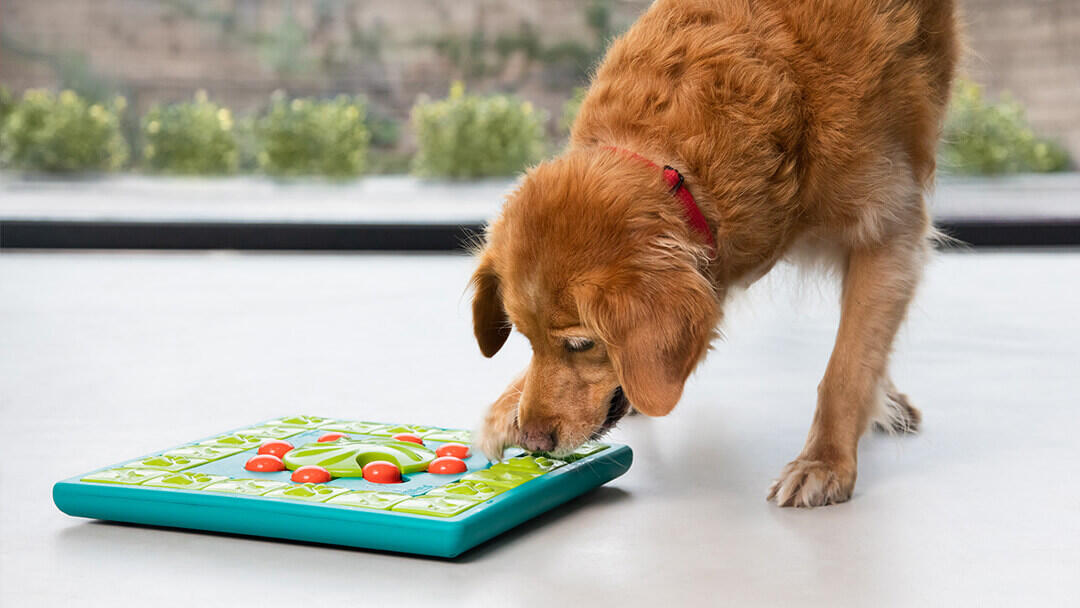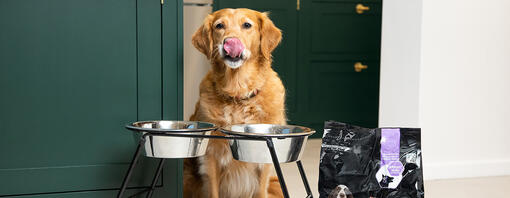
When your dog reaches the age of about seven – a little younger in large breeds (five to six) and older in small breeds (around nine) – they’re generally considered to be ‘senior’. When they reach this age and start to slow down, you’ll need to adjust their diet to support them better. Find out more about feeding older dogs in this guide.
You might notice your dog wanting to take life a little easier, as we all do when we get a little older! There will also be some less visible changes as they approach their senior stage of life as their bodies and digestion start to change and their immune system may need some extra support.
What to feed senior dogs
To provide optimal nutrition for your ageing companion, consider gradually switching them to a complete, balanced senior dog food, as these are specifically formulated to meet the changing nutritional needs and eating habits of older dogs.
Senior dog foods typically offer a higher protein content to support muscle mass, and a reduced calorie count to help maintain a healthy weight as your dog's activity level decreases. Additionally, these diets often include added vitamins and minerals, such as vitamin E, to bolster their immune system.
Purina food for older dogs
At Purina, we have a great range of senior dog food to provide your ageing canine companion with all they need to thrive in their golden years. Our experts have crafted delicious recipes with essential nutrients to help joint mobility, heart care and a healthy immune system so that your dog can continue to enjoy an active and fun lifestyle even as they approach old age.
BETA senior dry dog food
Our Purina BETA senior dog food is packed full of essential proteins and enriched with all the vital nutrients to support your dog’s mobility, heart and immune system. Key benefits include high-quality protein, no artificial additives, natural ingredients, digestive support, dual kibble shapes, and tailored nutrition for seniors.
Pro Plan senior dog food
Our Pro Plan Age Defence range contains an exclusive blend of nutrients to keep dogs as lively and alert as possible, even in their older years. Additionally, it’s specially formulated to help improve mental sharpness, maintain activity levels, keep their coat shiny from root to tip, and ensure good dental care.
Senior dog treats
When feeding your senior dog treats, be mindful of their caloric intake. Opt for low-calorie treats designed for seniors or healthy alternatives like fruits or vegetables.
Remember, treats should only make up a small portion of your dog's overall diet. Overindulging in treats can contribute to weight gain and negate the benefits of a calorie-controlled diet.
Mental enrichment is still important for senior dogs but instead of using treats, consider using bits of their daily food ration.
Consult your vet for personalised advice.
My senior dog is gaining weight, what should I do?
As senior dogs tend to be less active, and have a slower metabolism, you might notice them putting on a bit of weight as they get older. As they get on in years, changing to a lower calorie diet can be a good idea.
As older dogs tend to be less active, particularly if they have mobility issues such as osteoarthritis, they can be more prone to obesity. While some health problems can lead to obesity, being overweight can cause health problems too, and put more strain on joints. Because of this, it’s very important to monitor your dog’s body condition regularly.
If you think your dog is overweight, make an appointment to speak to your vet to discuss the best way forward. It may be a simple case that your dog is eating too much, or they may have an underlying medical problem that can be addressed. Either way, your vet may recommend a more calorie-restricted weight loss diet or a specialist diet dog food for older dogs.
Incorporate gentle exercise to help manage your senior dog’s weight and promote overall health. Activities like short walks, swimming, or low-impact play can keep them active without straining their joints.
Consult your vet before starting any new exercise routine, especially if your dog has mobility issues. Consider reduced weight bearing exercises like hydrotherapy.
Tips for feeding older dogs
It’s not just your dog’s food that you’ll need to change as they get older, you’ll need to adjust their eating habits too. Here are our top 6 tips for feeding older dogs:
1. Feed little and often
Your dog will probably be used to being fed twice a day, although as they reach their senior years, they may prefer smaller portions more often.
2. Serve wet food at room temperature
To bring out the food’s taste and smell, serve it at room temperature. Remember, if you’re feeding your older dog food that’s been stored in the fridge, you’ll need to take it out up to two hours before mealtime to get it to the right temperature.
If that’s not possible, it’s fine to briefly microwave wet foods to warm them but stir it thoroughly when you take it out and be careful that it’s never hot, or it could burn your dog’s sensitive mouth!
3. Store dry food properly
Dry complete foods should be stored in a dry, clean environment. You can help keep the food smelling and tasting great by keeping it in re-sealable packaging or an airtight container.
4. Feed them in a quiet place
When it comes to mealtime, feed your older dog in a quiet place where they can eat in peace without being interrupted. If you have more than one dog, feed them at the same time but separately so that one doesn’t bully or snatch food from the other.
5. Consider a raised food bowl
Older dogs can experience a range of age-related conditions, including arthritis, which can affect their mobility and comfort. For senior dogs with arthritis, simple tasks like bending down to eat from a bowl on the floor can become challenging and painful. In these cases, providing a raised food bowl can significantly improve their comfort and ease of eating.
Make sure the floor surface isn’t at all slippery as standing to eat while trying not to slide puts a strain on ageing muscles and joints.
6. Don't overfeed
Remember, older dogs are more prone to weight gain than adult dogs, so be careful not to overfeed them. If you’ve recently changed your dog over to a new food, follow the feeding guide on the pack at first. The guide is only approximate, so monitor your dog’s body condition regularly and adjust the amount to maintain their ideal weight. As an important part of their diet, your dog will need easy access to fresh, clean drinking water throughout the day and night. Make sure there is a water bowl in every room your dog spends time in. As their mobility decreases so does their motivation to get up and go in search of water – and dehydration can become a problem.
By choosing the right senior dog food from Purina and following these tips, you can help your dog enjoy their golden years. Remember, a little extra care can make a big difference in their quality of life.

